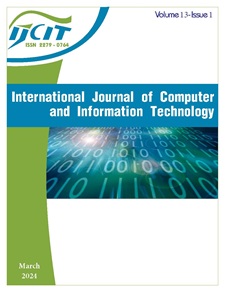A Helical Model of Color Harmony
DOI:
https://doi.org/10.24203/vk6mwr62Keywords:
color harmony; large datasets; Oklab; helical model; color combinationAbstract
Among the many approaches to the study of color harmony tried so far, a relatively recent method is to leverage the large number of human-created and ranked color palettes, such as those hosted at colourlovers.com. Analysis of these large datasets could provide insights into the nature of color harmony. In this study, a large number of palettes with five colors were observed in 3D in different color spaces. It was found that a significant number of such palettes fit a single pitch of a helix aligned along the lightness axis, but not centered at the origin of the a-b plane in CIELAB and Oklab spaces. Considering the presence of an accent color, more than 50% of the highly ranked palettes studied fit the helical model. The helical model was then used to create new color combinations. In a survey, respondents were asked to like or dislike the patterns colored with these color combinations. It was found that the new color combinations thus formed were almost as harmonious and pleasing as the originals.
References
K. E. Burchett, “Color harmony”, Color Res. Appl., vol. 27, no. 1, pp. 28–31, Feb. 2002.
S. Westland, K. Laycock, V. Cheung, P. Henry, and F. Mahyar, “Colour harmony,” in Colour: Design & Creativity, vol. 1, no. 1, pp. 1–15, 2007.
C. Chamaret, “Color harmony: experimental and computational modeling,” Ph.D. dissertation, Universite Rennes 1, 2016.
“COLOURlovers API Documentation,” 2023. [Online]. Available: https://www.colourlovers.com/api/.
P. O’Donovan, A. Agarwala, and A. Hertzmann, “Color compatibility from large datasets”, in ACM SIGGRAPH 2011 papers, Vancouver British Columbia Canada, 2011.
https://bottosson.github.io/posts/oklab/ retrieved on September 11, 2023
M. R. Luo, Ed., Encyclopedia of color science and technology, Cham, Switzerland: Springer Nature, 2016.
G. W. Wyszecki, Color science, 2nd ed. Nashville, TN: John Wiley & Sons, 2000.
https://www.rit.edu/science/munsell-color-science-lab-educational-resources retrieved on Sep 13, 2022.
M. R. Luo, G. Cui, and B. Rigg, “The development of the CIE 2000 colour‐difference formula: CIEDE2000”, Color Res. Appl., vol. 26, no. 5, pp. 340–350, Oct. 2001.
C. Rusu, M. Tico, P. Kuosmanen and E. J. Delp, “Classical geometrical approach to circle fitting—review and new developments”, J. Electron. Imaging, vol. 12, no. 1, p. 179, Jan. 2003.
J. A. Brandon and A. Cowley, “A weighted least squares method for circle fitting to frequency response data”, J. Sound Vib., vol. 89, no. 3, pp. 419–424, Aug. 1983.
D. Cohen-Or, O. Sorkine, R. Gal, T. Leyvand, and Y.-Q. Xu, “Color harmonization”, in ACM SIGGRAPH 2006 Papers on - SIGGRAPH ’06, Boston, Massachusetts, 2006.
Downloads
Published
Issue
Section
License
Copyright (c) 2025 Shreeniwas Sharma, Jyoti Tandukar, Rabindra Bista

This work is licensed under a Creative Commons Attribution-NonCommercial 4.0 International License.
The articles published in International Journal of Computer and Information Technology (IJCIT) is licensed under a Creative Commons Attribution-NonCommercial 4.0 International License.


